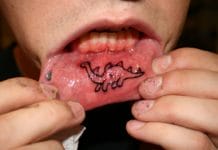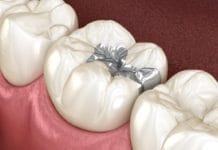A connective tissue disease or disorder is one that affects the elastin and collagen proteins within connective tissues. Connective tissues are responsible for joining different body parts and structures together.
Dental hygienists often have to think outside of the box and change their “normal” appointments to care for patients who suffer from a connective tissue disease.
To date, more than 200 connective tissue diseases have been identified.1 A few of the most well-known and defined connective tissue diseases are scleroderma, rheumatoid arthritis, systemic lupus erythematosus, granulomatosis with polyangiitis, mixed connective tissue disease, and undifferentiated connective tissue disease.1,2
Systemic Lupus Erythematosus
Systemic lupus erythematosus (SLE) is defined as a chronic disease that affects multiple tissues and organs such as skin, joints, heart, lungs, kidneys, blood cells, and brain. SLE has a wide range of symptoms, and their severity can range from mild to moderate and is patient dependent.3,4 Many people with SLE experience bouts of flare-ups and periods of remission throughout their lives.
Some of the more common signs and symptoms patients experience is a butterfly-shaped rash across the cheeks and bridge of the nose, photosensitivity, fatigue, chest pain, Raynaud’s syndrome, and joint pain or stiffness. Many times, lupus affects women in their reproductive years, but it can be seen in men and children as well.3
Scleroderma
Scleroderma is defined as a group of connective tissue diseases that causes “hardening and tightening of connective tissue and skin.”5 This disease is considered rare and affects around 75,000 to 100,000 people in the United States, appearing in women more frequently than men.
The two main types of scleroderma are categorized as localized and systemic. Localized scleroderma is described as being confined to the skin only and can resolve on its own without treatment.
Systemic scleroderma can be characterized as either diffuse or limited. Limited scleroderma is also known by the acronym CREST Syndrome. The “c” stands for calcinosis, which causes calcium deposits to form within the skin. The “r” is for Raynaud’s phenomenon, and the “E” is for esophageal dysmotility. The “s” stands for sclerodactyly, which is the tightening of the skin on the fingers, and the “t” is for telangiectasias, which causes red spots to appear in the skin due to dilated blood vessels.
These patients often suffer from Sjogren’s syndrome as well, which causes dry eyes and mouth.5-8
Some of the most common signs and symptoms of scleroderma are Raynaud’s phenomenon, which causes blood flow to the fingers and/or toes to be reduced, resulting in a color change to the extremities. This phenomenon often happens after being exposed to cold temperatures. It can lead to swelling of the fingers and toes, numbness and pain, and, in extreme cases, gangrene.7
Tightening and swelling of the skin is also a common symptom of scleroderma.
Rheumatoid Arthritis
Rheumatoid arthritis (RA) is an autoimmune disorder that attacks the synovium of the joints as well as the skin, eyes, heart, lungs, and blood vessels, and 1.5 million people in the United States suffer from rheumatoid arthritis.9,10 Females are three times more likely to receive a diagnosis of RA than their male counterparts.9
The most common symptoms of RA include tenderness and pain of the joints with or without warmth and redness, stiffness of the joints that arise first thing in the morning, as well as fever and fatigue. Many times, the small joints of the hands and feet are affected first, and as the disease progresses, it can affect larger joints throughout the body. It is common for the same joints on both sides of the body to be involved.
Diagnosing RA is based upon many factors, including a complete health history, physical examination, imaging, and blood tests that check for certain antibodies and inflammation markers that are linked to RA.9 If left untreated, RA that affects the synovium of the joints can harm the bones as well as lead to impairment of the joints.10 Because RA is considered a degenerative disease and can lead to life-alternating complications, quick and aggressive treatment is usually recommended.9,10
As with scleroderma, these patients are at high risk for developing Sjogren’s syndrome. RA patients are at an increased risk for developing lymphoma, so close monitoring and follow-up with their physician is imperative.9
Granulomatosis with polyangiitis − This disease is sometimes referred to as Wegener’s and is defined as an inflammation of both small and medium-sized blood vessels in the body. The inflammation causes a decrease in blood flow to cells.11 In most cases, the blood vessels of the lungs, throat, and sinuses are affected first.
Early respiratory signs and symptoms include coughing, nasal congestion, nosebleeds, and shortness of breath.11,12 More systemic symptoms can include vision changes and eye redness, difficulty hearing, numbness in fingers and or toes, fever, fatigue, bruises, skin rashes, and joint pain. This disease is considered rare and affects an estimated three out of every 100,000 people.11
There is no one specific diagnostic test for this disease. A multitude of tests and a physical evaluation are always required. The tests can include imaging, blood work (specifically to check for an antibody known as ANCA that is common in granulomatosis with polyangiitis), urinalysis, and a biopsy of any tissues that may be affected.11,12 Common treatments for this disease include the use of corticosteroids, chemotherapy, and immunosuppressive medications, as well as plasma exchange.11
Mixed Connective Tissue Disease
Mixed connective tissue (MCTD) disease is an autoimmune disorder with signs and symptoms of at least two different connective tissue diseases and the presence of an antibody known as RNP.13 The most common signs and symptoms in patients with MCTD include Raynaud’s phenomenon, swelling of the hands and fingers, muscle and/or joint pain, and difficulty breathing.
Blood work is imperative to diagnosing MCTD; an estimated 75% of people with MCTD suffer from both anemia and leukopenia.13 Different imaging tests and studies can include x-rays, echocardiograms, EKGs, CT scans, angiograms, and heart catheterizations are also used to aid in a diagnosis of MCTD. Treatment of MCTD varies widely depending upon the patients’ involvement and severity, but it can usually involve treating symptoms and preventing organ involvement and damage.13
Undifferentiated Connective Tissue Disease
Undifferentiated connective tissue disease (UCTD) is an autoimmune disorder that exhibits signs and symptoms of a connective tissue disease but does not meet all of the criteria to be officially diagnosed with a specific disorder. The most common signs and symptoms of UCTD include joint pain, arthritis, fever, Raynaud’s phenomenon, dry eyes and mouth, sensitivity to light, and mouth sores.14
While many patients diagnosed with UCTD will develop a “true” diagnosable connective tissue disease, around 75% of patients will never cross into this territory.15
Considerations for the Dental Hygienist
Hygienists may have to adjust their expectations and appointments to care for patients who suffer from a connective tissue disease. For example, patients with scleroderma may suffer from extreme skin tightness of the face, which can make it very difficult for these patients to undergo an appointment the length of a traditional prophy, let alone appointments that may require more time like nonsurgical periodontal therapy/SRP. These patients can also suffer from the tightening of the esophagus, which makes swallowing difficult, so ultrasonic scaling may not be possible.5,8
Patients suffering from RA can develop salivary gland dysfunction. Hygienists understand the importance that saliva plays in helping to remove both cariogenic and periodontal pathogens. Educating these patients on their increased risk for periodontal disease and caries as a result of their CTD is important.10 Based on their specific needs, these patients may require more frequent dental radiographs and may benefit from additional fluoride adjuncts.
Patients with MCTD can suffer from trigeminal neuralgia, which can make all aspects of a dental hygiene appointment extremely painful.13 The simple act of brushing the teeth is considered a trigger for trigeminal neuralgia, so these patients may need alternative methods of brushing given to them. These can include mouth sponges and rinses or something simple for them to remove as much biofilm as possible while keeping them comfortable when they are experiencing an episode.16
Patients with UCTD can experience mouth sores, which can make home care like brushing and flossing their teeth impossible.14 Like patients suffering from trigeminal neuralgia, these patients may benefit from sponges or rinses in place of brushing.
The dental hygienist’s goal in treating a patient with a CTD should be to help them maintain the best oral health they can while simultaneously minimizing their pain and discomfort. Connective tissue diseases can cause a myriad of oral symptoms, so tailoring appointments and educating these patients on their therapeutic relief options and encouraging them is imperative for them to achieve good oral health. Whether this is suggesting different alternatives to traditional toothbrushing or creating shorter, more frequent recalls, many CTD patients will require some degree of personalization at their dental appointment.
While oral health may not be the priority for a patient suffering from a CTD, especially if they are experiencing a flare in their disease, hygienists should be comfortable discussing the oral-systemic link of their CTD disease and helping them to understand the importance of managing their oral symptoms and maintaining good oral health.
Before you leave, check out the Today’s RDH self-study CE courses. All courses are peer-reviewed and non-sponsored to focus solely on high-quality education. Click here now.
Listen to the Today’s RDH Dental Hygiene Podcast Below:
References
- Connective Tissue Diseases. (2019, December 15). Cleveland Clinic. Retrieved from https://my.clevelandclinic.org/health/diseases/14803-connective-tissue-diseases
- Pepmueller, P.H. Undifferentiated Connective Tissue Disease, Mixed Connective Tissue Disease, and Overlap Syndromes in Rheumatology. The Journal of Missouri State Medical Association. 2016: 113(2): 136–140. Retrieved from https://www.ncbi.nlm.nih.gov/pmc/articles/PMC6139943/
- Lupus. (2019, March). American College of Rheumatology. Retrieved from https://www.rheumatology.org/I-Am-A/Patient-Caregiver/Diseases-Conditions/Lupus
- Lupus. (2017, October 25). Mayo Clinic. Retrieved from https://www.mayoclinic.org/diseases-conditions/lupus/symptoms-causes/syc-20365789
- Scleroderma. (2019, May 18). Mayo Clinic. Retrieved from https://www.mayoclinic.org/diseases-conditions/scleroderma/symptoms-causes/syc-20351952
- Scleroderma. (2019, September 16). Cleveland Clinic. Retrieved from https://my.clevelandclinic.org/health/diseases/8979-scleroderma-an-overview
- Scleroderma. (2019, March). American College of Rheumatology. Retrieved from https://www.rheumatology.org/I-Am-A/Patient-Caregiver/Diseases-Conditions/Scleroderma
- Limited Scleroderma. (2017, May 18). Mayo Clinic. Retrieved from https://www.mayoclinic.org/diseases-conditions/crest-syndrome/symptoms-causes/syc-20355535
- Rheumatoid Arthritis. (n.d.). Arthritis Foundation. Retrieved from https://www.arthritis.org/diseases/rheumatoid-arthritis
- Rheumatoid Arthritis. (2019, March 1). Mayo Clinic. Retrieved from https://www.mayoclinic.org/diseases-conditions/rheumatoid-arthritis/symptoms-causes/syc-20353648
- Granulomatosis with Polyangiitis (Wegener’s). (2019, March). American College of Rheumatology. Retrieved from https://www.rheumatology.org/I-Am-A/Patient-Caregiver/Diseases-Conditions/Granulomatosis-with-Polyangitis-Wegners
- Granulomatosis with polyangiitis. (2018, December 20). Mayo Clinic. Retrieved from https://www.mayoclinic.org/diseases-conditions/granulomatosis-with-polyangiitis/symptoms-causes/syc-20351088
- Sapkota, B., Yasir, AK Mixed Connective Tissue Disease. StatPearls Publishing. 2020. Treasure Island, FL. Retrieved from https://www.ncbi.nlm.nih.gov/books/NBK542198/
- Undifferentiated Connective Tissue Disease. (2019, February 11). Genetic and Rare Diseases Information Center. Retrieved from https://rarediseases.info.nih.gov/diseases/12342/undifferentiated-connective-tissue-disease
- Glossary: Undifferentiated Connective Tissue Diseases. (n.d.). Lupus Research Alliance. Retrieved from https://www.lupusresearch.org/glossary_of_terms/undifferentiated-connective-tissue-diseases/
- Trigeminal Neuralgia. (2017, July 26). Mayo Clinic. Retrieved from https://www.mayoclinic.org/diseases-conditions/trigeminal-neuralgia/symptoms-causes/syc-20353344.












